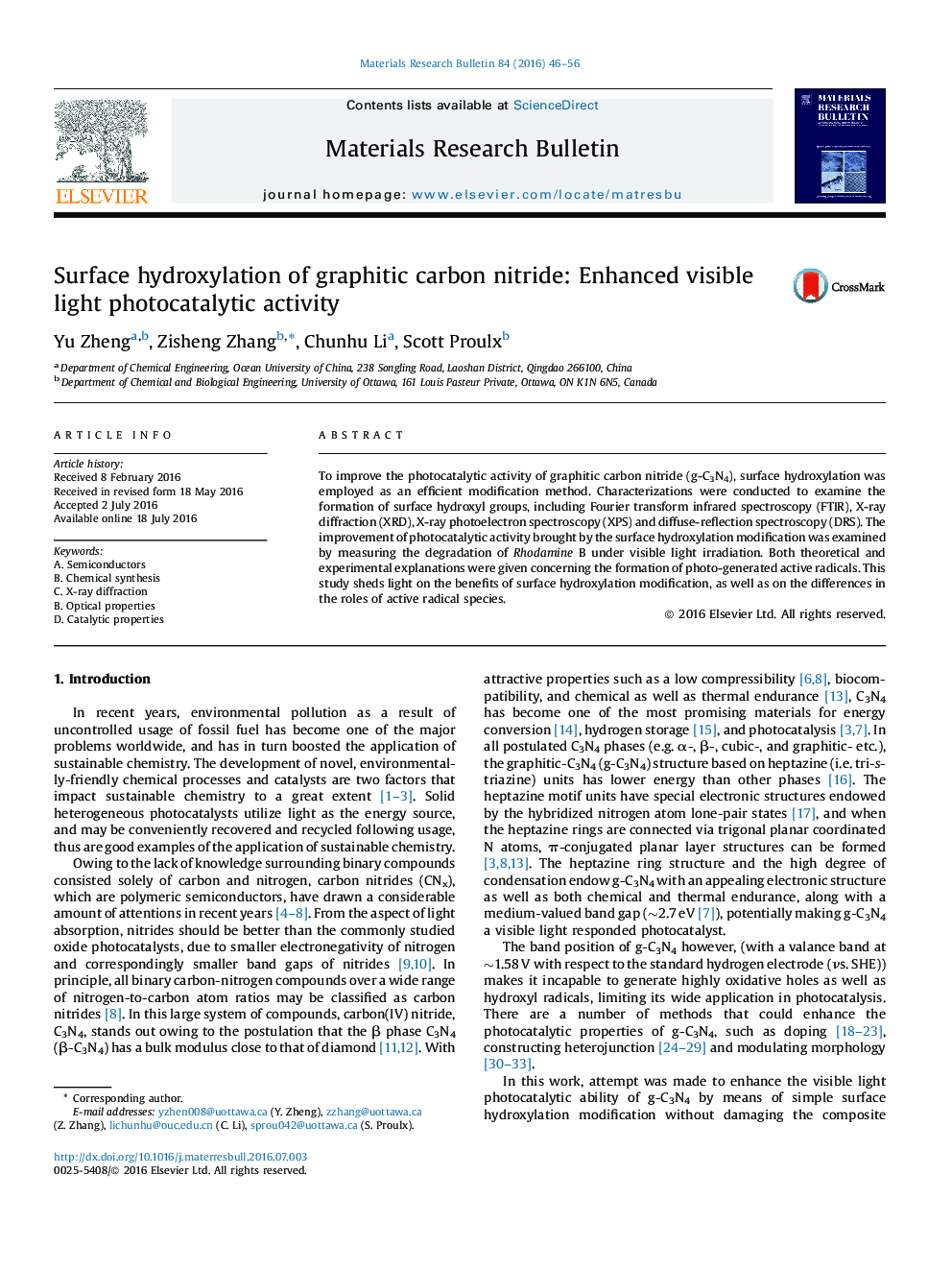| Article ID | Journal | Published Year | Pages | File Type |
|---|---|---|---|---|
| 1486861 | Materials Research Bulletin | 2016 | 11 Pages |
•Graphitic carbon nitride was surface-modified by hydroxyl groups using facile ultrasonic treatment.•The great photocatalytic performances of the surface-modified graphitic carbon nitride were proofed by Rhodamine B degradation.•The effects of oxidative species were experimentally tested via quenching experiments and results extensively discussed.
To improve the photocatalytic activity of graphitic carbon nitride (g-C3N4), surface hydroxylation was employed as an efficient modification method. Characterizations were conducted to examine the formation of surface hydroxyl groups, including Fourier transform infrared spectroscopy (FTIR), X-ray diffraction (XRD), X-ray photoelectron spectroscopy (XPS) and diffuse-reflection spectroscopy (DRS). The improvement of photocatalytic activity brought by the surface hydroxylation modification was examined by measuring the degradation of Rhodamine B under visible light irradiation. Both theoretical and experimental explanations were given concerning the formation of photo-generated active radicals. This study sheds light on the benefits of surface hydroxylation modification, as well as on the differences in the roles of active radical species.
Graphical abstractGraphitic carbon nitride, modified with surface hydroxyl groups, showed excellent activity in photocatalytic degradation of Rhodamine B.Figure optionsDownload full-size imageDownload as PowerPoint slide
